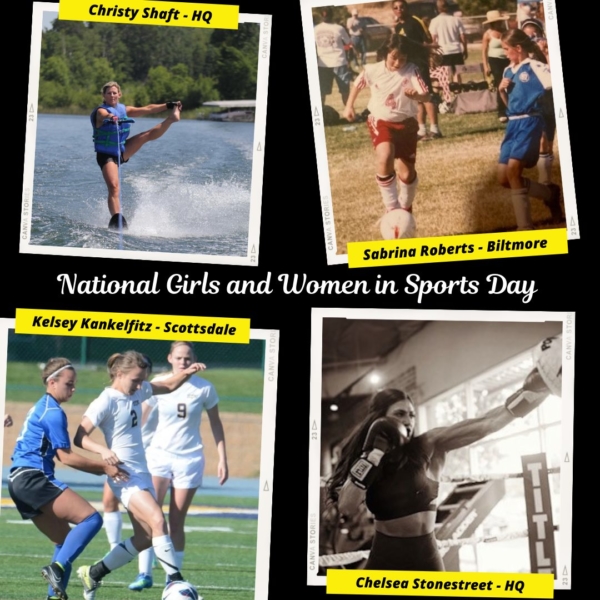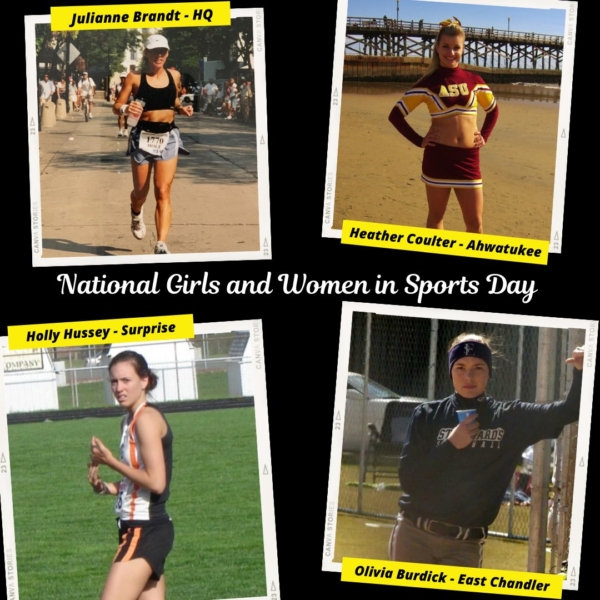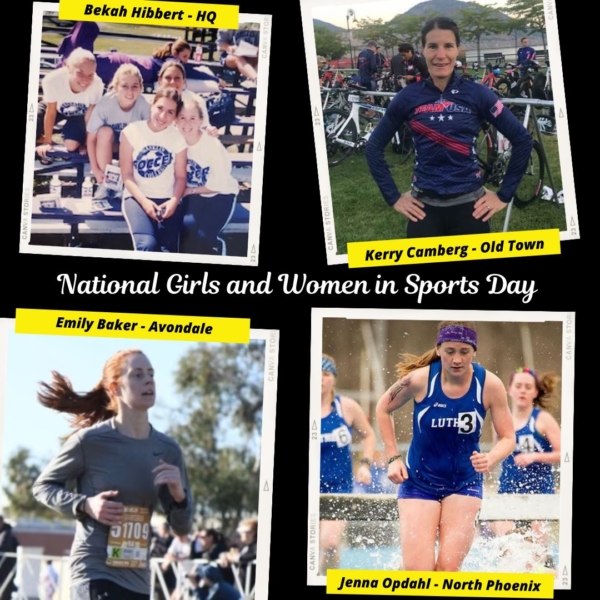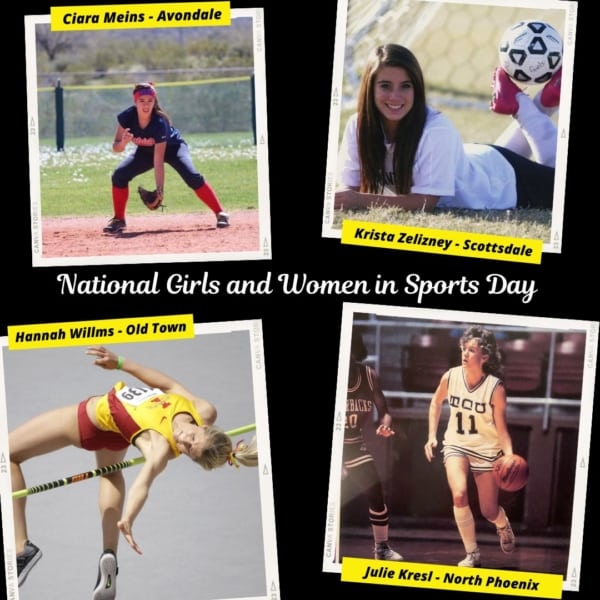by Rebekah Hibbert MS, ACT, Spooner Director of Sports Medicine
Today is National Women in Sports Day, a day that celebrates the “accomplishments of female athletes, a day to recognize the influence of sports participation for women and girls, and a day to honor both the progress we’ve made as well as the continuing struggle for equality for women in sports”. While days like this are important to celebrate, they should also serve as a reminder that each of us can support long-overdue change in the representation of the female athlete.
Women in sports continue to break barriers and reach new heights every year and we know that when women are playing sports, or coaching, or refereeing, or on the sports medicine team at the highest levels, and being showcased on a large scale we are changing the narrative for young girls. We are also allowing everyone the chance to become more invested in women’s sports through accessibility.
It is commonly said that ‘if you can see it you can be it’ but what does that mean when we are talking about women in sports? I was 14 years old when the U.S. women’s soccer team won the 1999 World Cup, and I can say unequivocally that it changed everything I felt about being an athlete. It was the first time I had seen the power of women in sports on national TV, in front of a sold-out stadium, being celebrated for their athletic ability. Those women looked like me and my friends, they were conquering the world stage (quite literally), and they were instilling in me that I could go anywhere my talent and hard work would take me. Every time I see women reach new heights in sports it reignites that fire in me, not only because of how it continues to inspire me, but also for what I know it will do for the young female athletes who look up to those women. Twenty plus years after that 1999 moment, I am keenly aware that we are still not seeing female athletes enough and there is more that we can do, but the good news is there are ways to make those changes right now.
Mainstream media continues to fall short in their representation of women’s sports. How much (or really how little) media attention do female athletes actually receive? In the U.S. women’s sports only receive about 4 percent of sports media coverage, according to the Tucker Center for Research on Girls & Women in Sports. This is why arguing that people don’t care about women’s sports is an unfair and inaccurate statement. The truth is not that people don’t pay attention because they don’t care; it is because they don’t have the same access. “If news organizations don’t commit to consistent women’s sports coverage, then they’re helping perpetuate the biased, inaccurate belief that fans don’t care about women’s sports. You can’t build a following for women’s sports when fans don’t know when or where they’ll find games or features or in-depth analysis.” (Shira Springer)
And it shouldn’t take a significant global feat, like the World Cup, to put female athletes in the spotlight. It is not just that women’s sports deserve more airtime, as we learned last year, it is also that the country is ready for them to have it. WNBA viewership was up 68% in 2020, the NWSL was up 300%, and the reason for this increase in pretty obvious, they were finally put on a regular rotation on major TV outlets including ESPN and CBS.
The importance of increased recognition is not just for those who play sports currently but for every young person who sees them. The effect that increasing the presence of women’s sports in mainstream media would have on young females alone could be astronomical. Research by E.A. Daniels presented young adults (male and female) with photos of female athletes performing their particular sport. After seeing these photos, the female participants were more likely to self-describe their own physical abilities in a positive manner. Performance photos prompted them to also see the women as ‘powerful’, ‘inspirational’, and ‘breaking down gender stereo types.’ Even more interesting, it prompted them to want to work on their own skills and encouraged ‘positive feelings about being active.’ Research by Heywood and Dworkin showed that performance photos elicited a positive response from male subjects as well. Male participants remarked that they admired the women in the photos for their ‘athletic abilities.’ Research shows that ALL of us need to be exposed to women in sports, so why are we still not doing it as well as we could? “Creating a culture of fandom around players and teams relies on getting to know athletes and building anticipatory excitement, understanding strategy, knowing statistics, even arguing about contracts, trades, and lineup changes. All of that takes consistent, day-in and day-out coverage that makes an audience hungry for more.” (Shira Springer).
In order for women’s sports to continue to grow they have to be in the spotlight, on mainstream TV and streaming services, in the nightly sports round up, making headlines, and displaying their athletic abilities. Until women in sports are given equal time by the mainstream media we won’t even scratch the surface of what can be accomplished. Without that equality we are not only doing the female athlete a disservice but also the young athletes, female and male, who rely on these athletes for inspiration, motivation, and self-confidence. 2020 proves that the narrative of women’s sports is completely outdated and that we have underestimated the power of the female athlete. People WILL watch women’s sports if we just simply give them more access and opportunity to do it. Let’s use a day like today as a call to action so we can celebrate even more accomplishments in 2022!
Pictured below: Members of the Spooner Team!





